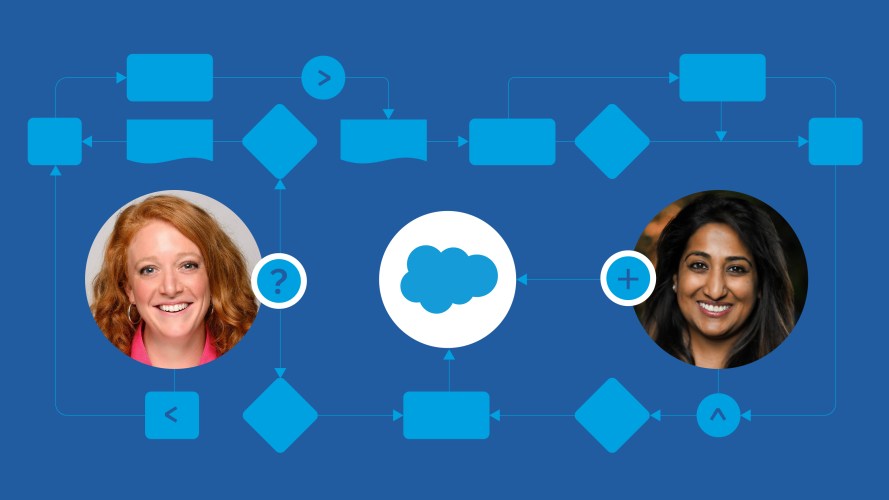How to Empower a Small Business to Co-Design Their Salesforce



Understanding the needs of end users and including them in the design process builds trust. Here's how one CEO learned to love Salesforce.
“What does your dream house look like?” It may sound like a silly question at first, but asking it has always been my starting point when it comes to understanding a client’s ideal state for their Salesforce solutions. When I met with Tori Ulrich, CEO and Founder of Chicago Super Sitters, I learned that her Salesforce implementation couldn’t handle onboarding potential sitters and matching them to families seeking childcare. It wasn’t her “dream house.”
Ulrich needed a better Salesforce implementation – and she needed to be on Experience Cloud. But what she had was a cookie-cutter design that ultimately was hindering the company’s productivity and growth. It made her feel like she had failed. But my team at Kander worked with Ulrich to unlock the power of Salesforce and also enable her to better understand how she could create her own success with the platform.
Our process had three phases: design, planning, and execution. Along the way, we centered on Ulrich, her needs as the owner of a small business recovering from the pandemic, and how to lay the groundwork for her future expansion plans.
Solve the right problem
For Chicago Super Sitters, we needed to understand every aspect of the business before we could define the scope of our solutions. You can’t design a dream home without knowing all the client’s wishes, after all. So our design process started at the 10,000-foot level to map out how the business wants to grow and the technical architecture of how to get there.
Ulrich was ready to give up on Salesforce before she came to Kander for help. We wanted to change that. We made sure she knew that Salesforce offers trust, security, and a unified view of her sitters and customers that she needs. But the design and implementation have to work for the business. So we listened with deep empathy to get a full picture of Ulrich’s challenges.
“When I went to Kander, I was broken,” Ulrich said. “(My Salesforce) was unusable. I felt out of the loop and I was scared to move forward. But Pallavi and her team met me right there.”
The discovery process is essential to making the most out of your Salesforce implementation, which Ulrich learned the hard way. We helped her invest the time to define the right challenges to solve. Here’s what we landed on for a list of requirements:
- Having a process for people applying to be sitters.
- Having an authentication and onboarding process for families to submit their profiles and childcare needs.
- The ability to match sitters with families.
- The ability for Ulrich to manage and coordinate the roster of sitters.
- Having the ability to handle events and franchising.
“I started my business 13 years ago as a good idea at my kitchen table,” Ulrich said. “As my business grew, I kept adding bandages after bandages to try to stop the bleeding of productivity. My biggest issue was that everything was siloed and in my head. The difference with Pallavi’s team was immediate: the open communications, line-by-line explanations, the whole team knew what was going on. They helped me move forward.”
Plan for a better Salesforce implementation
When we’re planning a technology implementation, we start with a tool-agnostic approach because there are many factors to consider. For example, we often have to integrate Salesforce with other systems and data sources. We also think about what tools suit the needs best and what resources are for ongoing maintenance of the tech stack. Importantly, we wanted to make sure to streamline costs and prevent Chicago Super Sitters from adopting redundant technology.
After our conversations with Ulrich and our assessment, we recommended building a new solution from scratch – versus trying to fix the existing org.
Our plan was to use use Experience Cloud and Sales Cloud to build out the new org. Our goals were to:
- Automate as many administrative tasks as possible so Ulrich could focus on what she does best: work directly with the sitters and families to make sure they’re all a fit.
- Create two new portals, each dedicated to the respective onboarding needs for sitters and families.
- Develop low-code/no-code templates that Ulrich can easily implement.
- Lay the foundation so Ulrich can add business units in the future.
- Help Ulrich skill-up using Trailhead so she feels empowered to use Salesforce.
Deliver the right solutions
We were able to provision a new org without charge – thanks to our partners at Salesforce. Before we built anything, we created a roadmap to show Ulrich how she would be able scale her new org to accommodate future growth. We didn’t want her to ever feel like she was powerless to make changes. From there our technical team implemented the design, ensuring Ulrich could run it from end-to-end.
For example, having the two new portals automates the initial onboarding and authentication processes for potential sitters and Chicago Super Sitters customers. This allows Ulrich to focus on vetting sitters, which requires a human touch. She’s also been been able to create dozens of templates that she’s able to use daily.
“The amount of automation that’s possible with Salesforce was a big epiphany for me,” Ulrich said. “Now that I’ve learned the power of Salesforce, I can control the chaos.”
We believe in empowering the business leaders we work with to think like designers. Involving Ulrich in co-creating solutions for Chicago Super Sitters gave her a sense of ownership. We gave her homework to skill up with Trailhead modules on Experience Cloud, making email templates, and task management. We trained her as if she were a junior admin. This helped us reduce some of our consulting fees, too.
“Knowing I have something this big and this powerful and that I have the ability to change it is empowering,” Ulrich said. “It doesn’t feel like I’m putting bandages on any more. I’m actually treating the wound.”





























